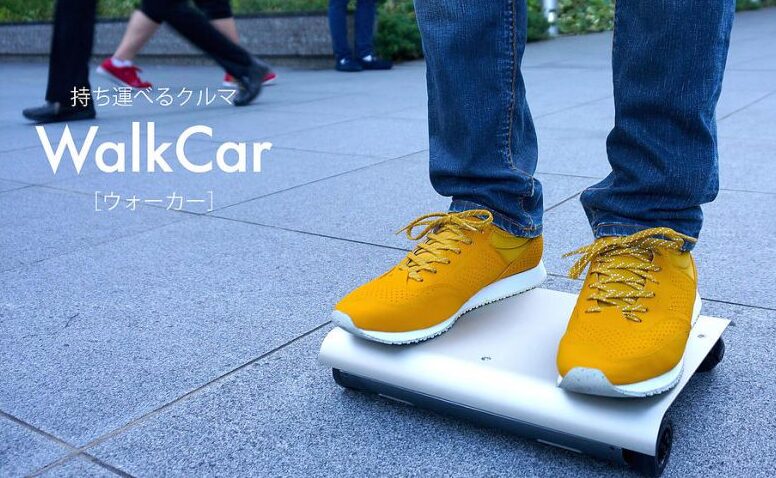The “WalkCar’’ is a laptop-sized portable gadget made of aluminium which resembles a skateboard and is the world’s first “car in the bag”. Created by the 26 year old Japanese engineer- Kuniako Saito and his team at Cocoa Corporation, the ‘WalkCar’ can carry as much as 120 kg. According to a report, the WalkCar weighs between two –three kilograms and requires a three hour charge and thereafter has a range of 12 kilometres at the speed of 10 kilometres per hour.
While studying at university, it occurred to Saito, “What if we could carry our transportations in our bags?” meaning we would always have our transportation with us to ride on. As Saito was doing his Masters in Engineering, specifically on electric car motor controls, his friend asked him to pursue his idea.
The WalkCar is simple to ride. As the rider stands on it, the WalkCar starts automatically and simply stepping off it, stops the vehicle. As per Saito, the vehicle has enough power to help people push wheelchairs. The best part about the WalkCar is that riders do not have to waste time looking for parking as it fits into a small bag when not in use.
Saito is confident that the WalkCar will go beyond bulkier devices such as the Segway or Toyota’s Winglet. Today, Saito is extremely proud and satisfied. He always felt that U.S was the one who would invent new products and Japan would improve upon them. However, the WalkCar is entirely unique depicting Japan’s originality and innovativeness.
The customers will be able to reserve their WalkCar as from autumn 2015 on the website Kickstarter. The vehicle will cost about $800 and shipping is expected to begin by spring 2016.
The WalkCar seems it may be easier to manoeuvre than the Segway, and moreover it is much smaller. While the tiny wheels look delicate, the video shows the WalkCar making its way over the bumps easily. Other than needing a solid ability to balance on a tiny platform, the WalkCar looks cool. Details of the WalkCar battery life have not been disclosed, but this 21st magic carpet looks like the perfect solution for traversing city blocks.
However, the question remains, will people use it to replace bikes or cars? Can it be the next big thing you may see all around? On the contrary, with increasing health issues, do you think it encourages people to become lazy as they may stop walking and use this vehicle to cover even the smallest of distance?



